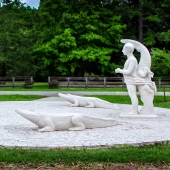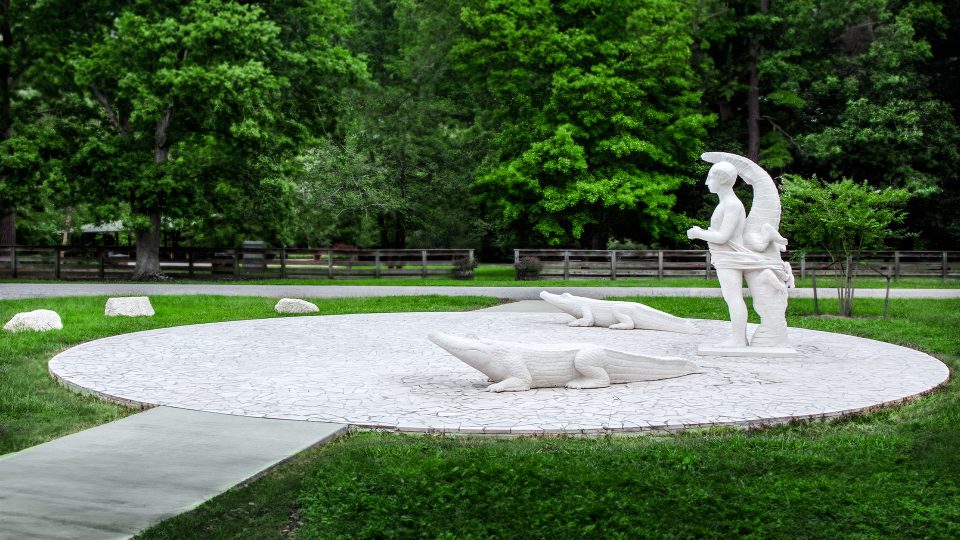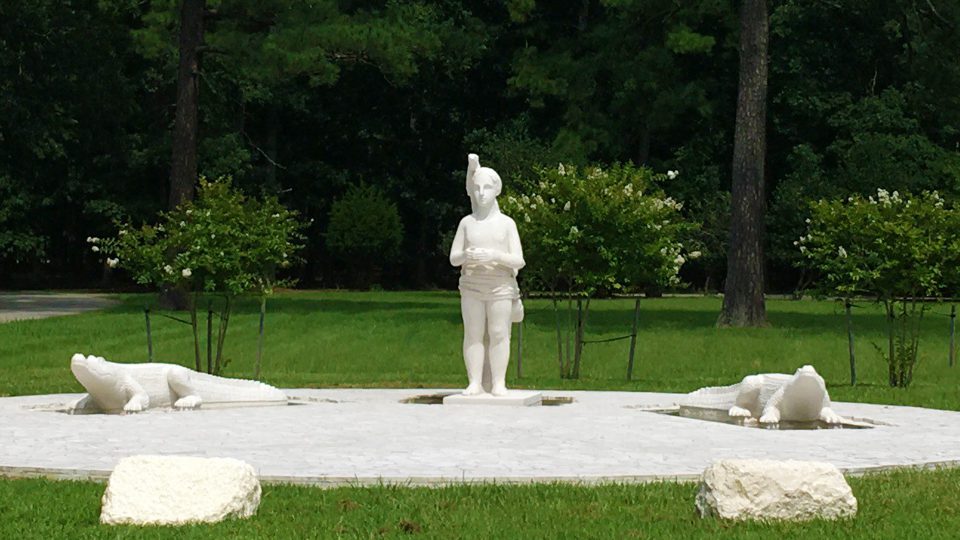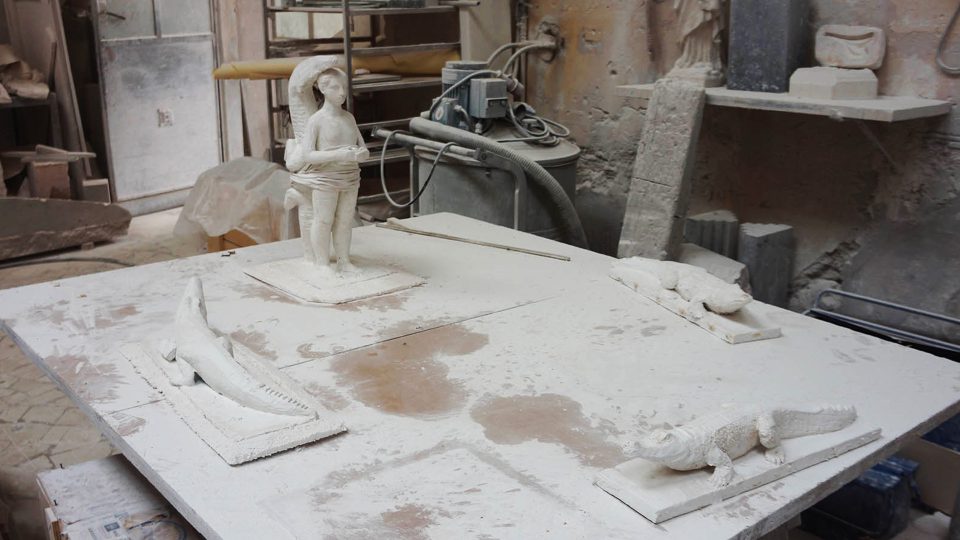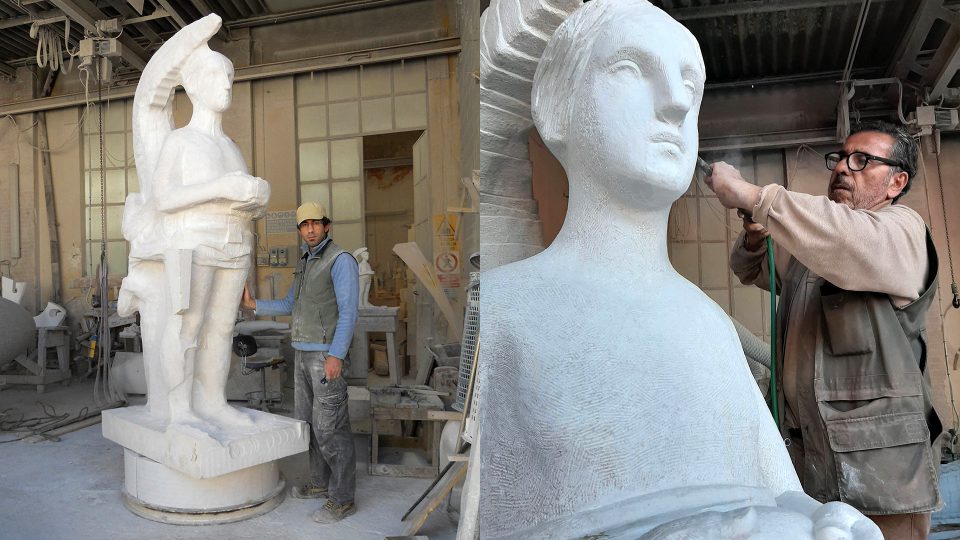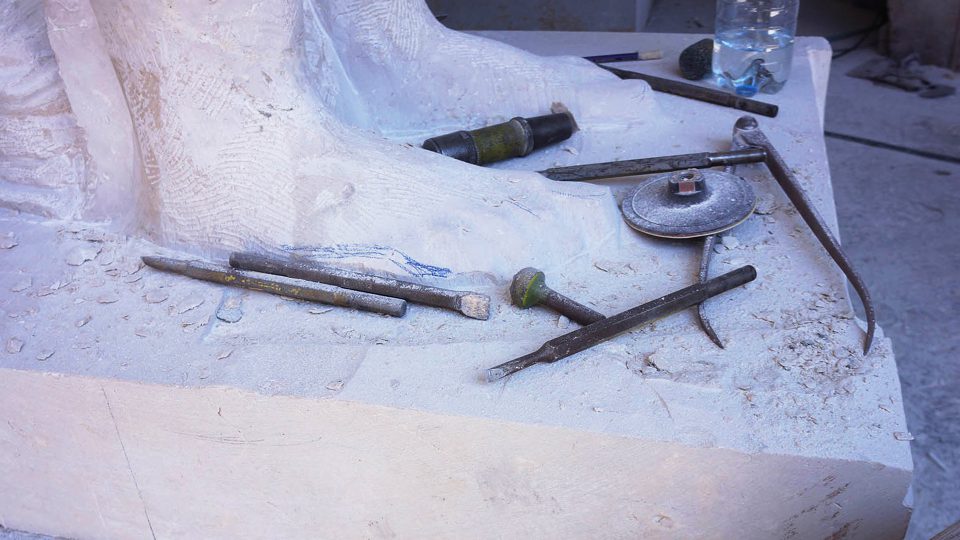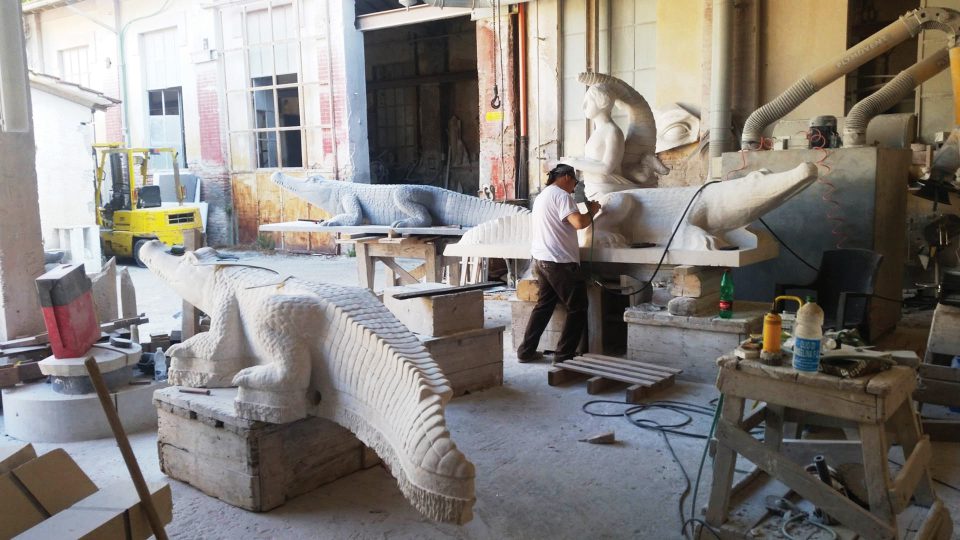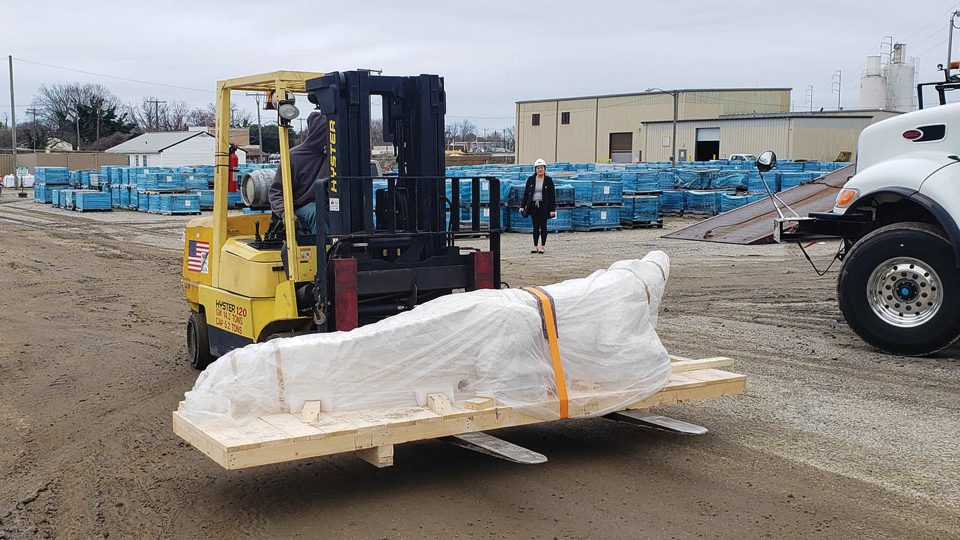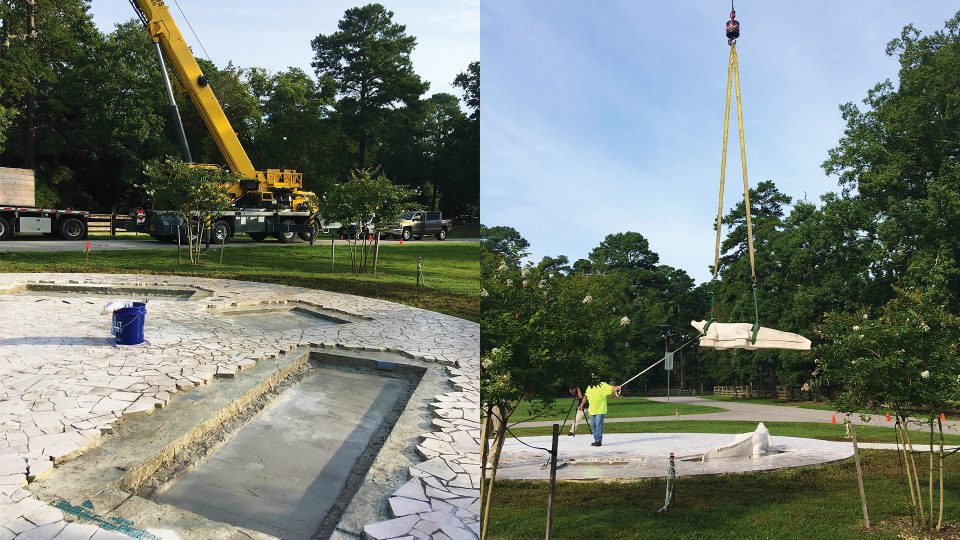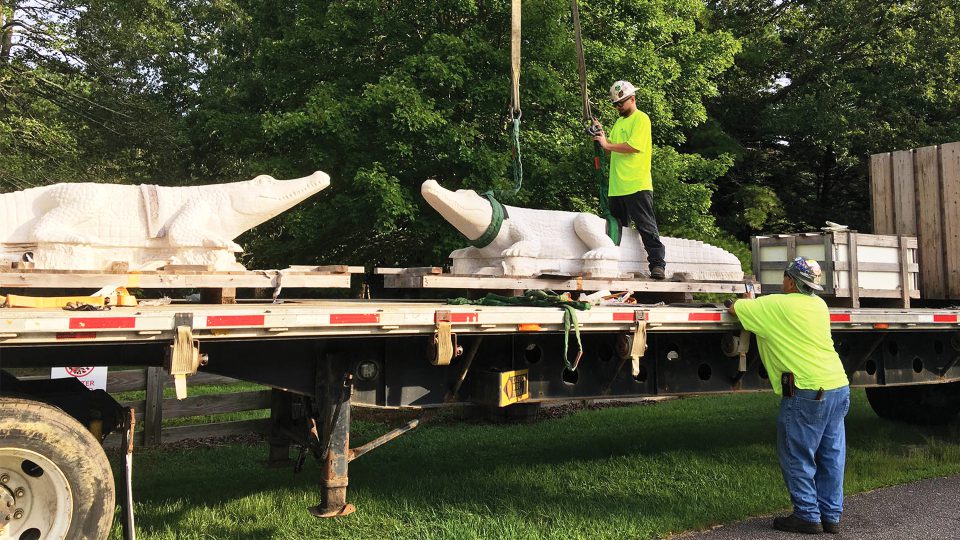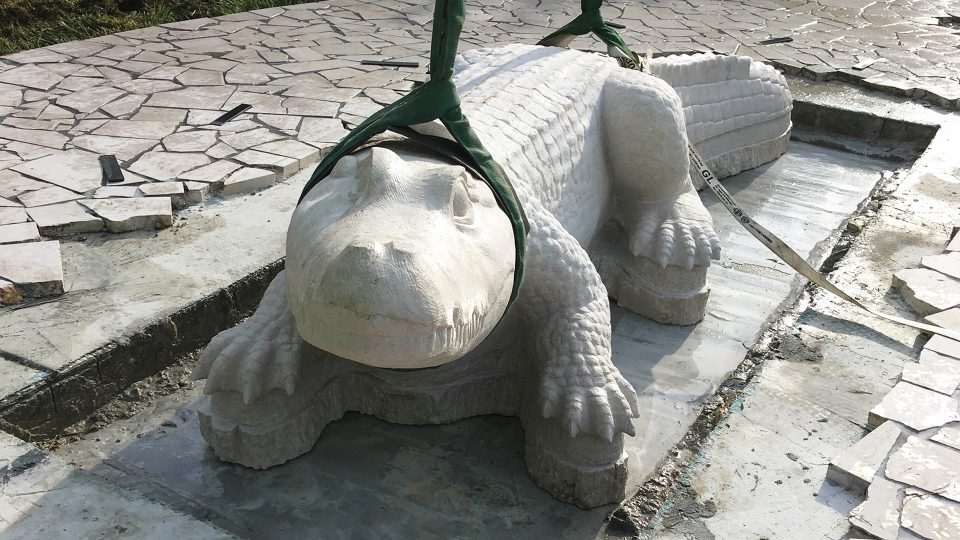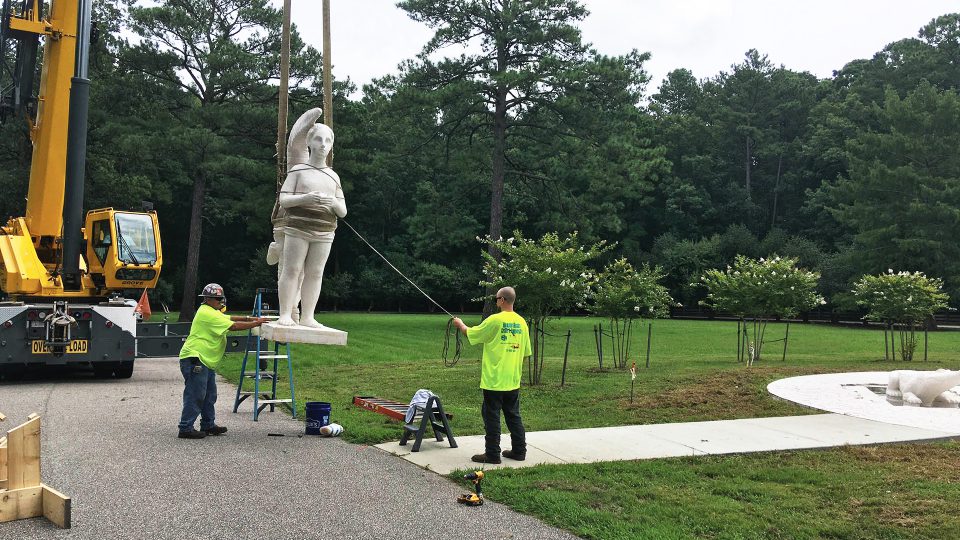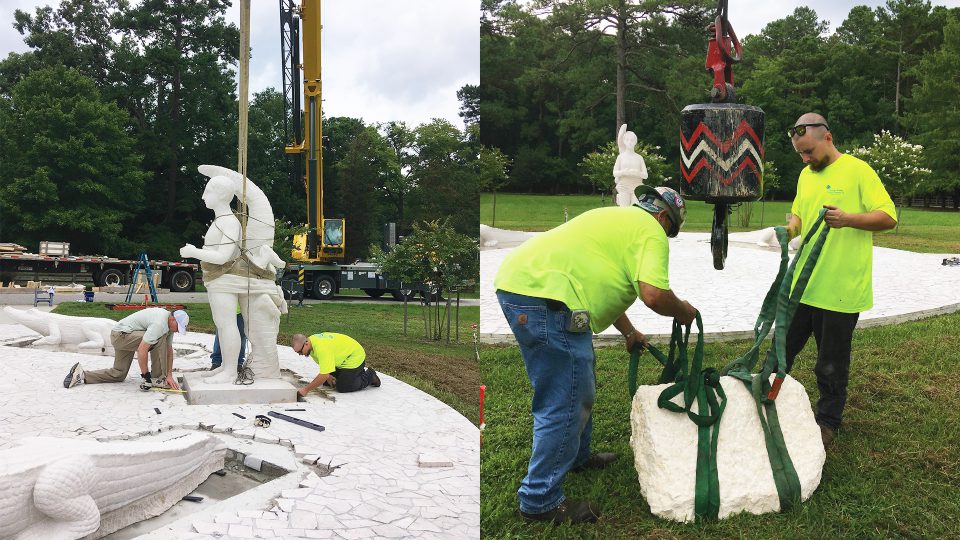Man and Crocodile
GIROLAMO CIULLA
Born in the small city of Caltanissetta on the Italian island of Sicily, Girolamo Ciulla began teaching himself to sculpt as a young man. Early on, he began specializing in travertine, a warmly colored kind of limestone formed in natural springs. In his twenties, he read about the northern Tuscan town of Pietrasanta, located down the mountain from the Carrara marble quarries and home to many working sculptors, and fell in love with the place. He lived and worked there from then on.
Many artists make small models or drawings and have artisans scale up the final work, but Ciulla did his own carving. While he primarily sculpted in travertine, he also worked in marble, and Man and Crocodile is one of his only marble pieces. Travertine is a tricky stone to carve because it is so porous, which also means it would not fare well with our freeze and thaw cycle. Ciulla selected botticino marble for its similar warmth to travertine, and its ability to withstand Tidewater weather.
Ciulla created a fantastic world of animals. Why? He didn’t exactly know. “Animals suggest something to me.” he said. He saw a live crocodile for the first time in Egypt in 2002 and was fascinated by it. Though he was not the first to depict the crocodile, he nevertheless wanted to express something of the essence of the crocodile in his art.
Sicily was a Greek island until the Romans took it over, so the Sicilian fascination with the crocodile might go as far back as Greek Sicily. In the 5th century BC, Greek historian Herodotus wrote this (some true and some not) about the crocodile that was sure to capture the imagination of his Greek readers: “It has the eyes of a pig, teeth large and tusk-like, of a size proportioned to its frame; unlike any other animal, it is without a tongue; it cannot move its under-jaw, and in this respect too it is singular, being the only animal in the world which moves the upper-jaw but not the under.” During the 600-year Roman Period, Sicily was a connection point between Italy and Tunisia in northern Africa, and depictions of crocodiles, most likely imported for sports, are present in several Roman mosaics.
In Egypt, the crocodile was a sacred animal, linked to the cycles of the Nile River, which fertilized the land every year when it flooded. Sobek, an Egyptian god, was sometimes depicted with just the head of a crocodile, and sometimes a full crocodile body. Sobek was also linked to the fertility of the Nile. He was sometimes worshipped as the creator of the Earth, but he was also an unpredictable deity who could sow chaos. In the Western Christian world, the crocodile lost its positive connections to nature, becoming sly (ex. crocodile tears) and remaining dangerous.
In addition to the crocodile and other animals, Ciulla’s subject matter often includes references to Classical myth (temples, goddesses) and the landscape of Sicily (Sicilian wheat). The look of his work, carved in travertine, with soft colors and a pitted, matte surface, evokes the ancient world, when people and their mythologies were intertwined. In Man and Crocodile, this pairing of a human figure and an animal closely associated with myth emphasizes their interconnectedness.
Ciulla found that his works were a result of what he saw. “I express what I manage to see, what is inside of myself. We’ll leave it to others to analyze it.”
ABOUT THE ARTIST
GIROLAMO CIULLA
Ciulla’s studio was in Pietrasanta, Italy, but he is known and respected well beyond his home base. His work was shown in dozens of invitational and curated exhibitions from London to the Netherlands, South Korea to South Carolina, and he was awarded commissions to create sculpture for public spaces.
Ciulla’s website: www.girolamociulla.com
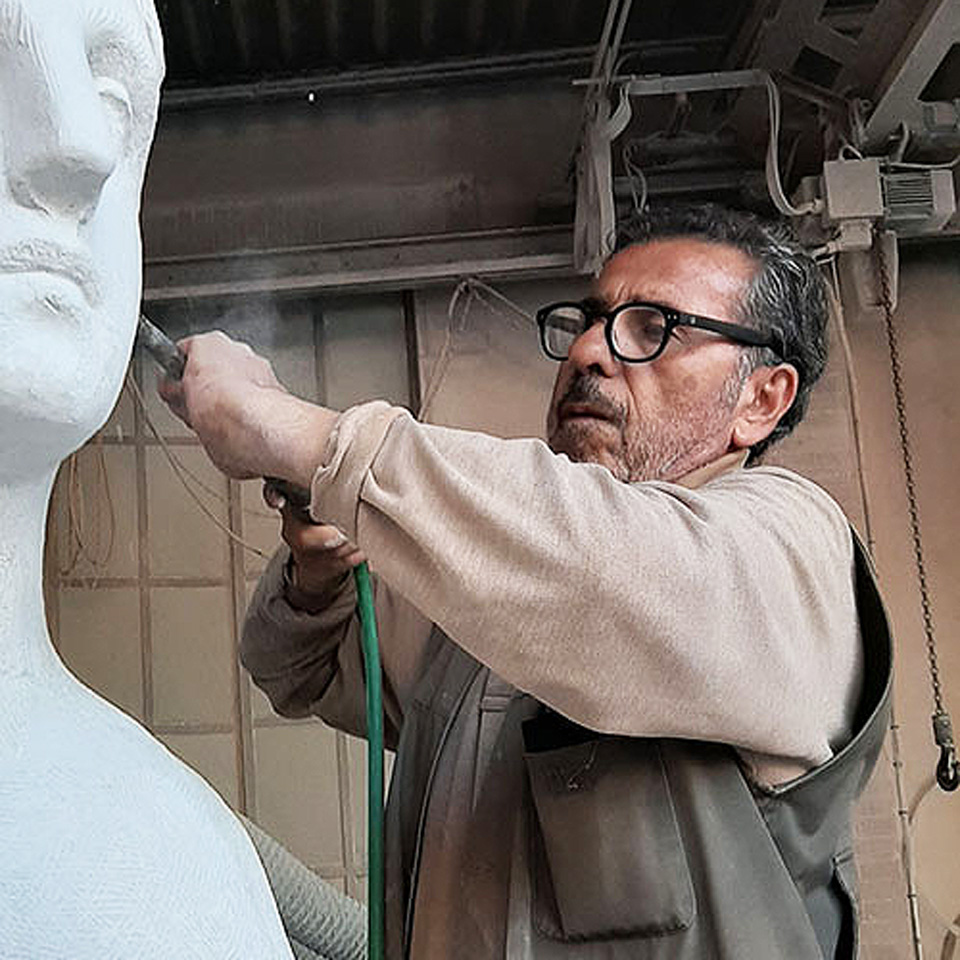
Artist: Girolamo Ciulla (1952–2023)
Details: Botticino marble, 7’ tall. Made in Pietrasanta, Italy, at Bottega Versiliese. Installed 2020.
Site: Newport News Park, near the entrance to the disc golf course
Audio Tour
I’m Rosa Maria Motta, Professor Emerita of Classical Studies and Art History at Christopher Newport University, and I’m delighted to tell you about Man and Crocodile by Girolamo Ciulla.
Girolama Ciulla was born in the small city of Caltanisetta on the Italian island of Sicily and began teaching himself to sculpt as a young man. In his 20s, he read about the Tuscan town of Pietrasanta, which is located down the mountain from the famous Carrara marble quarries. Because of its proximity to marble, this small city has been home to many working sculptors and artisans for centuries. Cuilla fell in love with Pietrasanta and has lived and worked there ever since.
In his drawings, paintings, and sculptures, Cuilla creates a fantastic world of animals. Why? He doesn’t exactly know. “Gli animali per me, mi suggeriscono qualcosa.” He says, “Animals suggest something to me.” He saw a live crocodile for the first time in Egypt in 2002 and was fascinated by its ugliness. Saying that he’s not the first to depict the crocodile in works of art, he nevertheless wanted to express something of the essence of the animal in his works. He often sculpts the animal’s long tail in a vertical position, even when the crocodile itself is in a horizontal position. The tail then works like a columnar support to another element of the composition, as we see in our sculpture Man and Crocodile, where the man and the animal make the verticality of a classical column.
In addition to the crocodile and other animals, Ciulla’s subject matter often includes reference to the Classical world of Sicily: its Greek temples, its Classical myths and goddesses, and its landscape. For example, he often depicts wheat, the symbol of the goddess Demeter, the most popular goddess of ancient Sicily. He says, “Il mio mondo é la mia terra.” “My world is my native land.”
Man and Crocodile is carved in Botticino marble because it suits our climate best. However, Ciulla almost always carves in Travertine. Travertine is a warmly colored kind of limestone that forms in natural springs. Its soft colors and pitted surface evoke the ancient world when people and their mythologies were closely intertwined. In Man and Crocodile, this pairing of a human figure and an animal, the crocodile, which is closely associated with the myth, emphasizes their interconnectedness.
Ciulla finds that his works are a result of what he sees. “Esprimo quello che vedo.” “I express what I see, what is inside of myself. I leave it to others to analyze it.”
